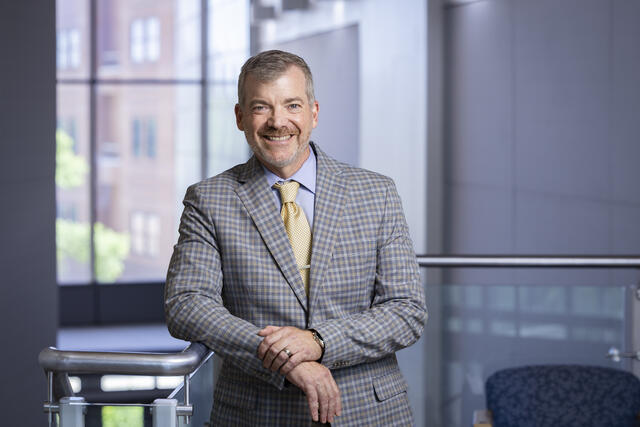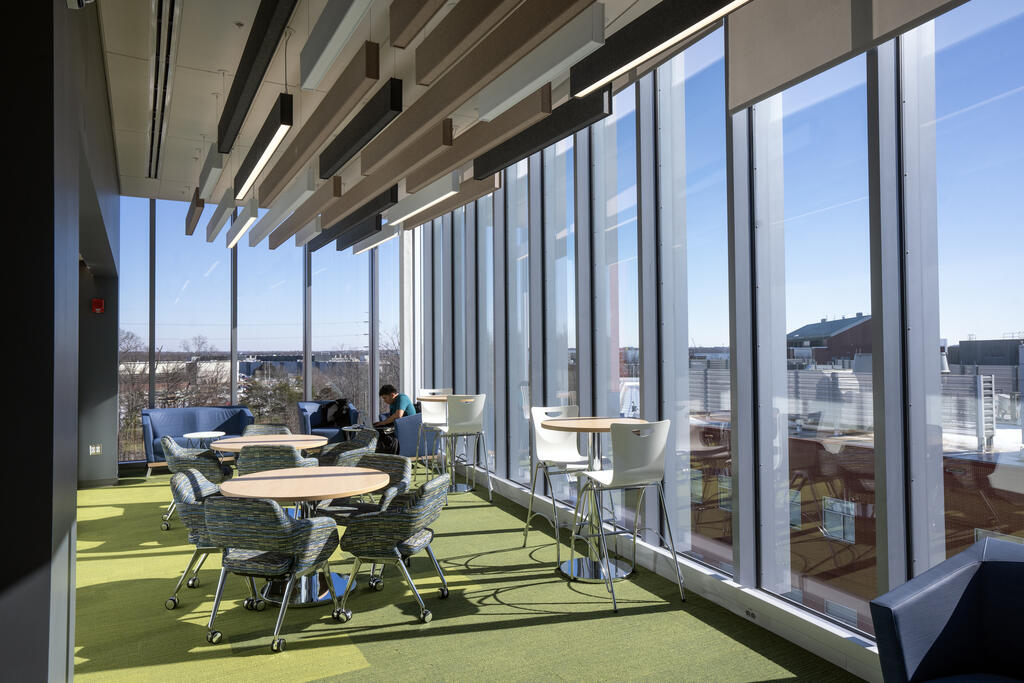Admission CTAs
Dean's Blog: Building today’s and tomorrow’s space leaders at George Mason

Earlier this month, as part of the AOES Department Climate Dynamics seminar series, our college collaborated with George Mason University Office of Research, Innovation, and Economic Impact to present an event called NASA Earth and Space. This discussion of current space exploration efforts and future projects with Jack Kaye, NASA’s associate director for research in the Earth Science Division, also featured discussion with some researchers from our college involved in very successful engagements with this valuable collaborator.
Following Kaye’s talk, the audience heard from the panelists, Anamaria Berea, Liping Di, Jim Kinter, and Peter Plavchan who each shared their ‘on this earth’ and ‘out of this world’ research goals and outcomes. There are countless exciting projects happening across multiple disciplines in George Mason’s College of Science. This panel alone included representation from four of our departments-- Computational Data Sciences; Geography and Geoinformation Science; Atmospheric, Oceanic, and Earth Sciences; and Physics and Astronomy; tackling such difficult challenges as life beyond our planet, agricultural sustainability, climate dynamics and resiliency, and even George Mason’s first opportunity to lead a NASA mission, the Landolt Mission.
Fast forward to a few weeks from today, when on Saturday, September 28, I will join George Mason President, Gregory Washington to kick off our third annual Space Day 2024 event. The six-hour afternoon, packed with fun, free activities for individuals of all ages from our academic and surrounding communities, includes Kjell Lindgren, a NASA astronaut who graduated from nearby Robinson Secondary School, (bonus for all our pre-med students, he is also a space doctor who logged 311 days in space). And those with budding STEM interests can also be inspired by Oleg Goushcha, an aerospace engineer from NASA Langley Research center who is analyzing aerodynamics of the Space Launch System. Both will be available after their talks for meet and greets, because we want to offer as many unique opportunities as possible for the day’s curious attendees to ask questions and learn.
To foster collaboration in the space sector locally, we’ve also reached out to leaders of the physics and astronomy departments of many nearby universities to encourage their faculty, staff, and students interested in aerospace research and partnerships to attend. We’d love to have them experience Space Day 2024 presentations and Q&A from a variety of our scientists and engineers who will discuss their recently funded space-related research, including the recently awarded NASA Landolt Mission at George Mason. And of course, as part of the festivities, everyone will have the chance to sign up to tour our George Mason Observatory on the Fairfax, VA Campus.
Let’s face it, it’s definitely worth it for our scientists and students to understand this emerging sector now. As Space Foundation announced this summer, the global space economy totaled $570 billion last year, a more than 7.4% increase from the year prior and almost double the space economy size ten years ago. Earlier this year, McKinsey and Company estimated the global space economy will be worth $1.8 trillion by 2035 (accounting for inflation). Sector growth is tied to new market opportunities and private sector investment, and like our earlier NASA Earth and Space event panel demonstrated, its impact can be felt across a variety of industries. So, the 8 to 10-year olds meeting these astronauts and researchers at George Mason Space Day may be given a head start by the time they are at university a decade from now. (Yes, we are also announcing a new Solar Saturdays program right after Space Day ends which may cultivate the growing space interests of fourth through eighth graders. {get the link})
As we look to solidify the Washington, D.C. and Virginia/Maryland area as an innovation technology hub, where better than George Mason to start building and expanding aerospace industry partnerships and developing the incoming diverse, creative, and experienced space workforce of the future? Hop on and let’s enjoy the out of this world ride to come.
-Cody
